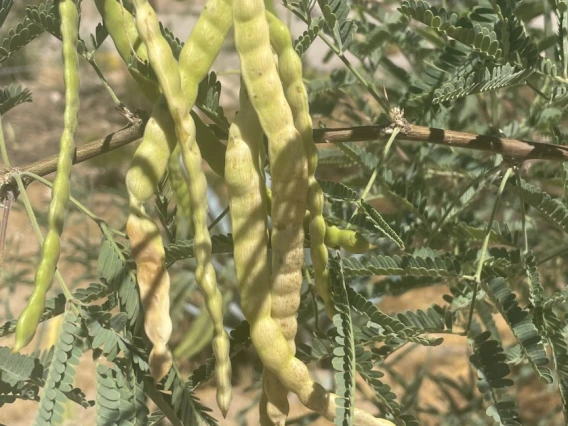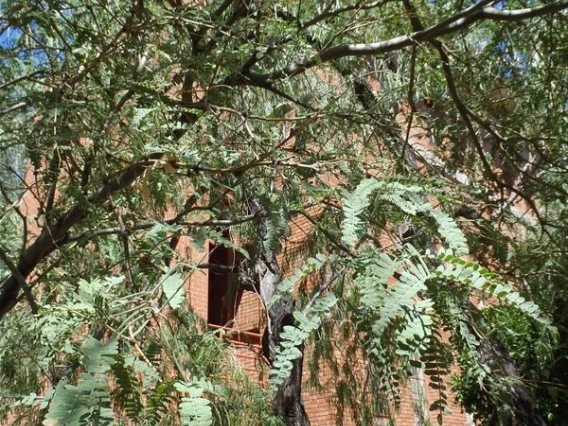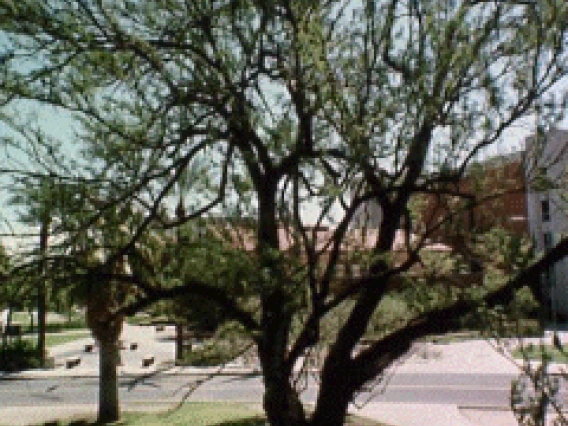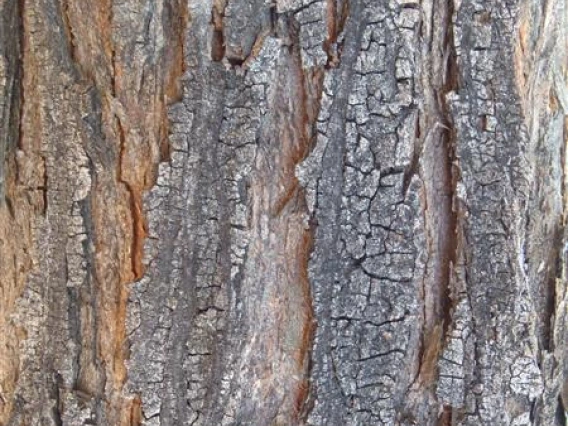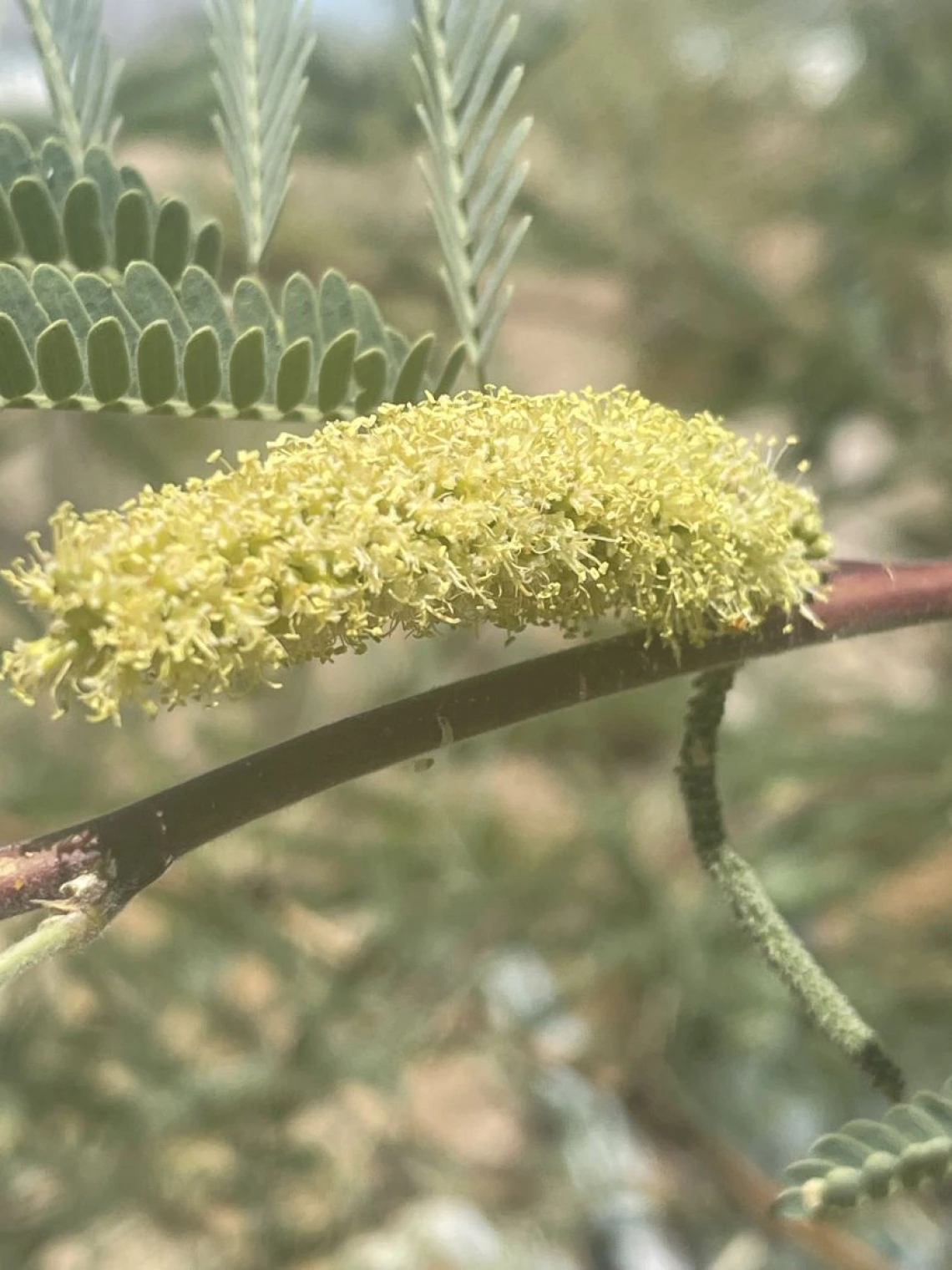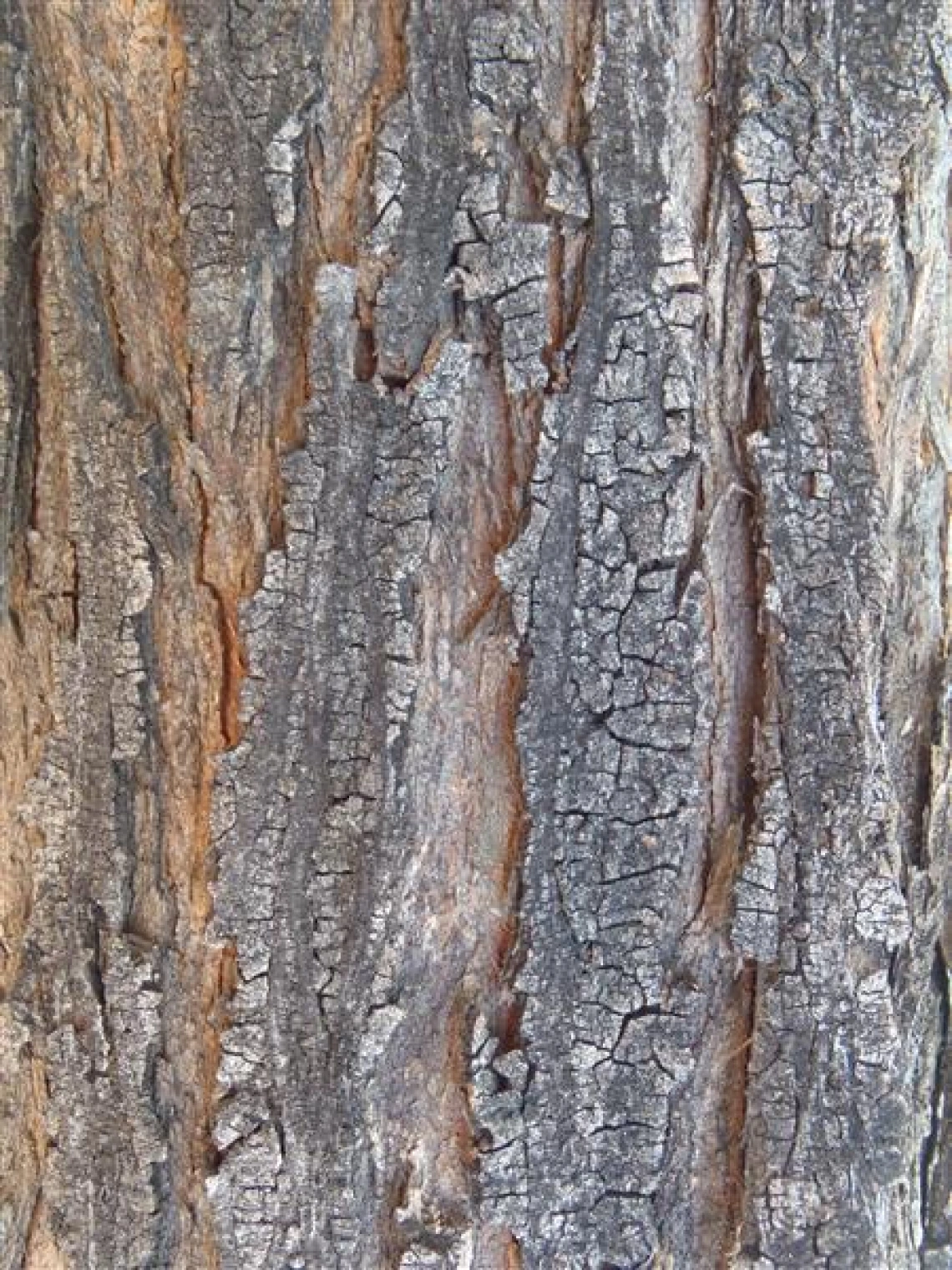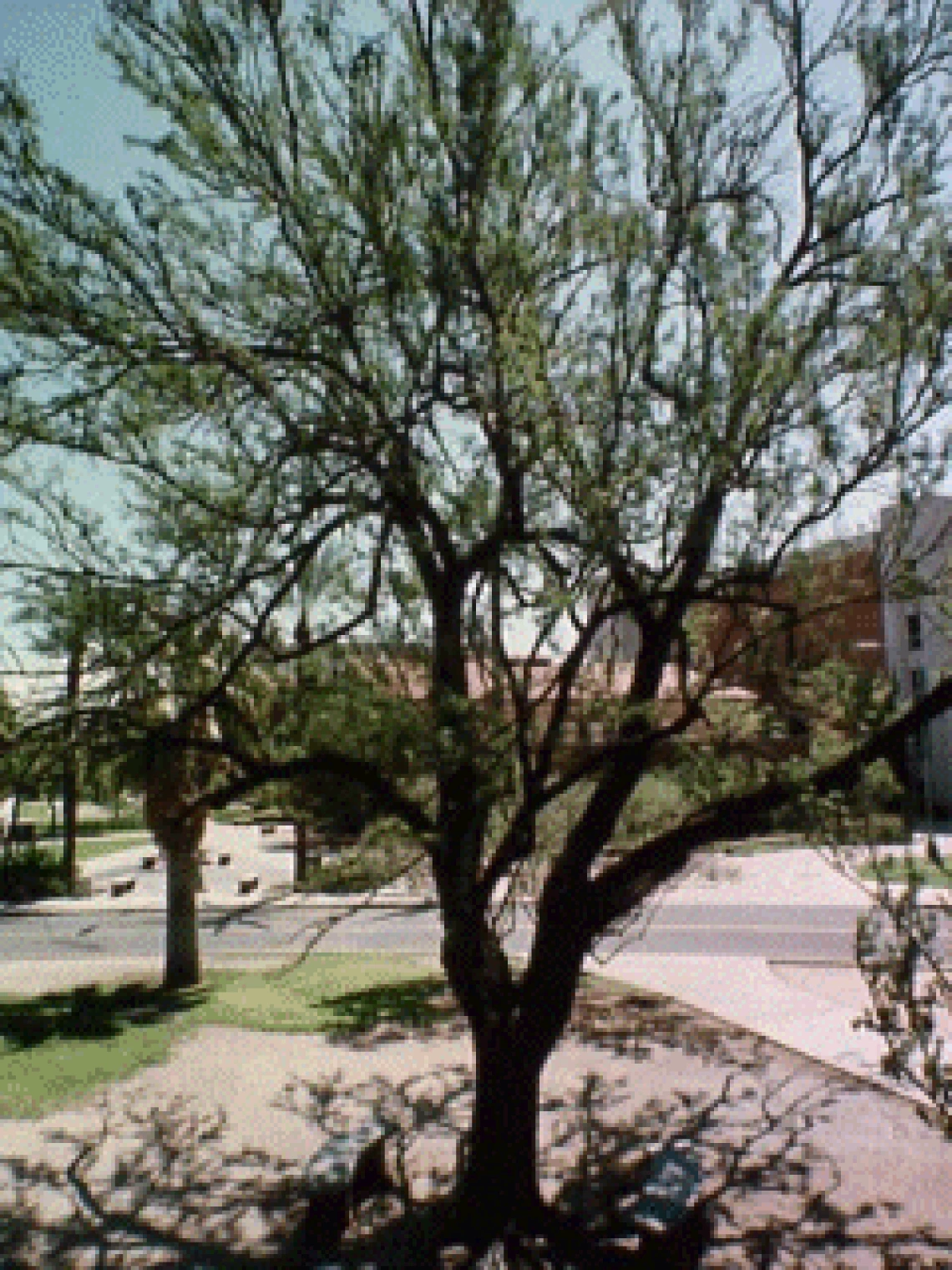Sonoran Native Plants Virtual Tour
Prosopis velutina | Fabaceae | velvet mesquite
Desert Ecology:
A highly abundant, bee-pollinated legumes in the SW which forms mutually beneficial associations with nitrogen-fixing bacteria in the soil. As a result, they are able to produce protein-rich seeds that were originally scarified and dispersed by megafauna, and now by riparian weathering and cattle. The foliage is also eaten by animals and the flowers are sweet and edible. Although generally grown in “bosques,” (dense mesquite stands), they are increasingly facing habitat destruction and grown in more dispersed groups or solitary.
Ethnobotany:
Mesquite was extensively used from pre-Colombian times to present. Tohono O’ohdam still make mesquite flour, and today this practice is becoming commercially viable. The beans, known as pechitas, are a source of starch for indigenous people. The honey is valued as is the charcoal flavoring grilled foods, the wood lumber for building material, basketry, and fabric, the gum for making candy, pottery glue, and black dye, the sap for a cold and flu remedy and the roots, bark, and leaves used to treat conjunctivitis, intestinal parasites, acne, dandruff. Piñon nuts and acorns were traded between native peoples in exchange for mesquite. The River Pima, who stored large quantities of mesquite flour, had two calendar months that referenced velvet mesquite: the “mesquite leaves moon” and “mesquite flowers moon.”




